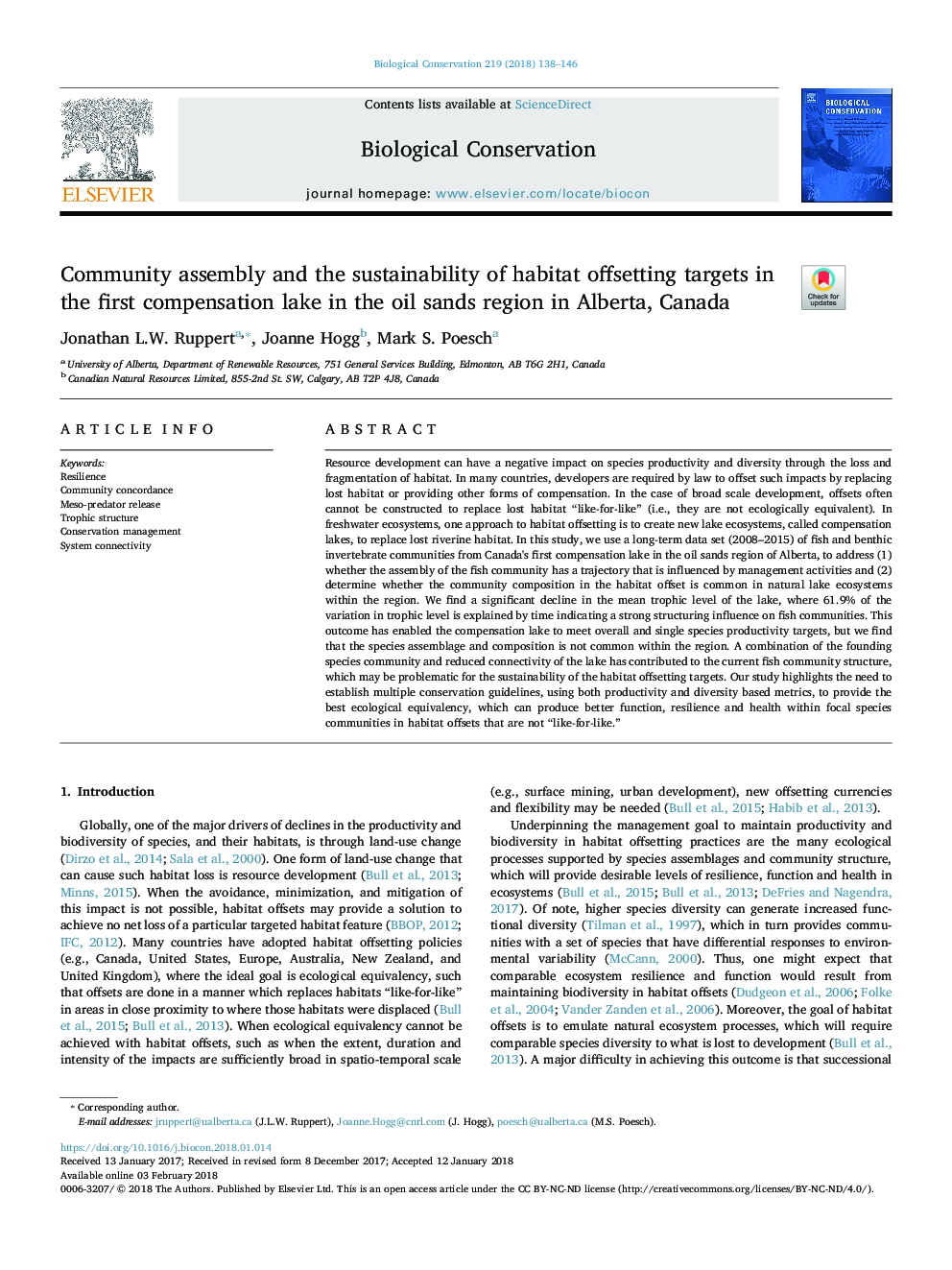| کد مقاله | کد نشریه | سال انتشار | مقاله انگلیسی | نسخه تمام متن |
|---|---|---|---|---|
| 8847447 | 1617886 | 2018 | 9 صفحه PDF | دانلود رایگان |
عنوان انگلیسی مقاله ISI
Community assembly and the sustainability of habitat offsetting targets in the first compensation lake in the oil sands region in Alberta, Canada
ترجمه فارسی عنوان
مونتاژ جامعه و پایداری اهداف جبران زیستگاه در اولین دریاچه جبران خساره در منطقه ماسه نفتی آلبرتا کانادا
دانلود مقاله + سفارش ترجمه
دانلود مقاله ISI انگلیسی
رایگان برای ایرانیان
کلمات کلیدی
انعطاف پذیری، هماهنگی جامعه، آزادی مزو-خرچنگ، ساختار طلا، مدیریت حفاظت، اتصال به سیستم،
موضوعات مرتبط
علوم زیستی و بیوفناوری
علوم کشاورزی و بیولوژیک
بوم شناسی، تکامل، رفتار و سامانه شناسی
چکیده انگلیسی
Resource development can have a negative impact on species productivity and diversity through the loss and fragmentation of habitat. In many countries, developers are required by law to offset such impacts by replacing lost habitat or providing other forms of compensation. In the case of broad scale development, offsets often cannot be constructed to replace lost habitat “like-for-like” (i.e., they are not ecologically equivalent). In freshwater ecosystems, one approach to habitat offsetting is to create new lake ecosystems, called compensation lakes, to replace lost riverine habitat. In this study, we use a long-term data set (2008-2015) of fish and benthic invertebrate communities from Canada's first compensation lake in the oil sands region of Alberta, to address (1) whether the assembly of the fish community has a trajectory that is influenced by management activities and (2) determine whether the community composition in the habitat offset is common in natural lake ecosystems within the region. We find a significant decline in the mean trophic level of the lake, where 61.9% of the variation in trophic level is explained by time indicating a strong structuring influence on fish communities. This outcome has enabled the compensation lake to meet overall and single species productivity targets, but we find that the species assemblage and composition is not common within the region. A combination of the founding species community and reduced connectivity of the lake has contributed to the current fish community structure, which may be problematic for the sustainability of the habitat offsetting targets. Our study highlights the need to establish multiple conservation guidelines, using both productivity and diversity based metrics, to provide the best ecological equivalency, which can produce better function, resilience and health within focal species communities in habitat offsets that are not “like-for-like.”
ناشر
Database: Elsevier - ScienceDirect (ساینس دایرکت)
Journal: Biological Conservation - Volume 219, March 2018, Pages 138-146
Journal: Biological Conservation - Volume 219, March 2018, Pages 138-146
نویسندگان
Jonathan L.W. Ruppert, Joanne Hogg, Mark S. Poesch,
